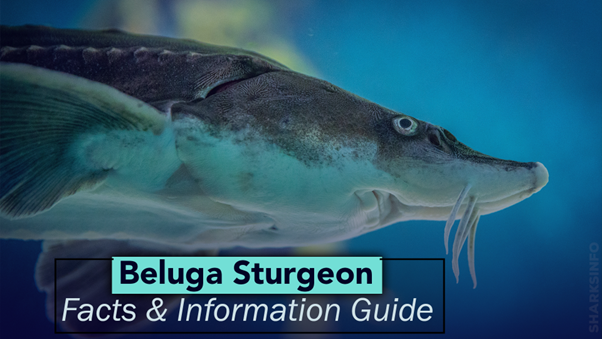Beluga sturgeons are one of the largest bony fish in the freshwater habitat. Scientifically, known as Huso huso belongs to the sturgeon family – Acipenseridae, consisting of 29 species of fish. The name of the fish is derived from the German word, which means skull as they are blessed with a large armored head. The fossils records of Beluga sturgeons show that they have landed on Earth in the middle of the Jurassic period about 174 million years ago. Well, there is much more about the fish which needs an explanation.
What Is The Geographical Distribution Of The Beluga Sturgeons?
Most commonly, the Beluga sturgeons are native to Caspian waters – the largest water body in the world. Other than that, they have been sighted in the Black Sea, the Adriatic Sea, the Sea of Azov, the Mediterranean Sea, the east coast of North America, many regions of Alaska, and along the rivers of Russia.

Geographical distribution of Beluga Sturgeon
What Habitat Do Beluga Sturgeons Prefer?
The Beluga sturgeons prefer warm and shallow waters usually in the summer season. They can take a deep dive of 1000 meters and can live in the extreme depth for about 25 minutes. Interestingly, they can also inhabit the cold habitat of the Arctic and Subarctic regions. Depending upon the type of season, they are also found living in the seas and oceans for feeding purposes.
What Is The Physical Appearance Of The Beluga Sturgeons?
Beluga sturgeons are steel blue to greyish black from the upper side and are pale from the underneath. They have a long head, and the mouth is extended equally along the length of the head and is covered with fringed barbels. The species can grow to a remarkable length as they have a much faster growth rate. These species can reach a length of 7.2 meters and is about 1,476 kg on average. But the largest specimen of the Beluga sturgeon that has ever been caught measures about 10 meters and is 2,000 kg.

How Do Beluga Sturgeons Reproduce?
The spawning season of the Beluga sturgeons is from May to June. The species exhibit migratory behavior for finding their mate for reproduction. The incubation period lasts for about 15 months, after that the female fish lays hundreds of eggs which hatch and young ones are born. Males reach sexual maturity at the age of 15 and have a life period of 65 to 90 years whereas females can become mature at the age of 25 years and live for about 150 years or even more.
What Feeding Habit Do Beluga Sturgeons Adapt?
The Beluga sturgeons are bottom dwellers which prefer muddy, sandy, and gravelly floors and use their blunt snouts to dig up buried prey. Moreover, they suck the floating material in the water, expelling the water or debris out from the gills and consuming the foodstuff. The dietary items include freshwater mussels, macroinvertebrates, Shrimp, small fishes, worms, clams, worms, crustaceans, and snails. Interestingly, they feed upon fresh food material and avoid dead and decomposing material.

What Is The Conservational Status Of The Beluga Sturgeons?
Due to overfishing and other human activities, the population of Beluga sturgeons has been declining from the ocean water at a rapid rate, as it is one of the most popular fish used for commercial purposes. ICUN considered Beluga Sturgeons as a Critically Endangered species.

What Are The Threats To Beluga Sturgeons?
The largest species of fish face many threats which make their survival a bit difficult, these factors include:
- Loss of habitat
- Contamination by pollutants and chemical waste
- Shortage of food
- Noise pollution
- Change in climatic condition
- Overfishing
Interesting Facts About Beluga Sturgeons
- The Beluga sturgeons have been known to evolve from the group of fishes – Palaeonisciforms, that existed in the Silurian Period about 419 million years ago.
- They are solitary fish that only pair with their mate during the breeding season.
- The Beluga sturgeons are the shy type of fish that avoid human interaction.
- Beluga sturgeons are the 3rd largest fish on Earth.
- Beluga sturgeons are wild species, they do not live in captivity.
Final Words
Beluga sturgeons have been living in the ocean water for about 174 million years ago and have a worldwide distribution but they are commonly native to the Caspian Sea and the Black Sea. The unique feature of these species is that they have long pointed beaks, which help them to locate buried prey. However, they are commercially very important to fisheries which is why the population is declining at a rapid rate, listing them as Critically Endangered species by IUCN.







